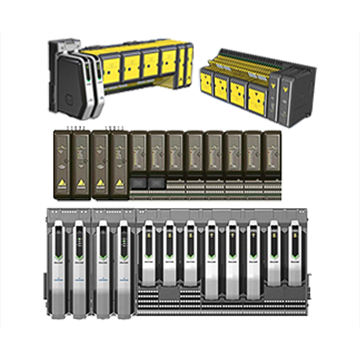Unlock Your Equipment's Potential with the Ultimate PLC Spare Parts Guide!
In the world of industrial automation, Programmable Logic Controllers (PLCs) play a crucial role in controlling machinery and processes. However, like any mechanical or electronic device, PLCs require maintenance and occasional replacements to ensure optimal performance. This is where PLC spare parts come into play. Sourcing the right parts can often pose challenges for users, from compatibility issues to finding reliable suppliers. This comprehensive guide aims to empower you with the knowledge needed to make informed decisions about PLC spare parts, ultimately enhancing your equipment's efficiency and longevity.

Understanding PLC Spare Parts
PLC spare parts are components that replace damaged or worn-out parts in a Programmable Logic Controller system. They ensure that the PLC can continue to perform its intended functions without interruption. Common types of PLC spare parts include input/output modules, power supplies, processors, and communication modules. Each of these parts plays a specific role; for instance, input/output modules facilitate communication between the PLC and external devices, while processors execute control commands. Understanding the different types of PLC spare parts and their functions is essential for any user looking to maintain or repair their equipment effectively.
Identifying When to Replace PLC Spare Parts
Being able to identify when it's time to replace PLC spare parts is vital for maintaining equipment efficiency. Common signs include erratic behavior of the machinery, frequent system errors, or unexpected shutdowns. For instance, a friend of mine worked in a manufacturing plant where they faced regular downtime due to faulty input modules. Initially, they overlooked these issues, assuming they were minor glitches. However, as problems escalated, they realized that timely replacement could have saved them considerable costs associated with lost productivity. Worn or faulty parts can lead to decreased performance, increased energy consumption, and ultimately, costly repairs if not addressed promptly.
How to Choose the Right PLC Spare Parts
Selecting the right PLC spare parts is critical for ensuring compatibility and functionality. Begin by identifying the specific model of your PLC and its requirements. Not all parts are interchangeable, and using incompatible components can result in further issues or even damage to the system. Quality should also be a primary consideration; opting for high-quality parts can enhance reliability and performance. Additionally, sourcing parts from reputable suppliers ensures that you're getting genuine products, which is crucial for maintaining warranty conditions and ensuring safety standards. A colleague once shared how they saved time and effort by establishing a good relationship with a reliable supplier who understood their needs and provided timely delivery of parts.
The Benefits of Regular Maintenance and Timely Replacement
Regular maintenance and timely replacement of PLC spare parts can lead to significant advantages. Not only does it help in prolonging the lifespan of your equipment, but it also optimizes performance and reduces the likelihood of unexpected breakdowns. By investing a little time and resources in regular checks, you may save considerably on repair costs in the long run. Moreover, well-maintained systems tend to operate more efficiently, which can lead to lower energy bills and improved productivity. My friend’s experience of neglecting maintenance led to a significant loss in production time, highlighting the importance of being proactive in equipment care.
Key Takeaways for Effective PLC Maintenance
In conclusion, understanding PLC spare parts and their significance is essential for anyone involved in industrial automation. By being proactive in maintaining your equipment and replacing parts as needed, you can ensure optimal performance and extend the life of your PLC systems. This guide should serve as a valuable resource for navigating the complexities of PLC spare parts, from identifying when to replace components to choosing the right ones. Make it a habit to refer back to this guide as you manage your equipment and keep it running smoothly for years to come.










Comments